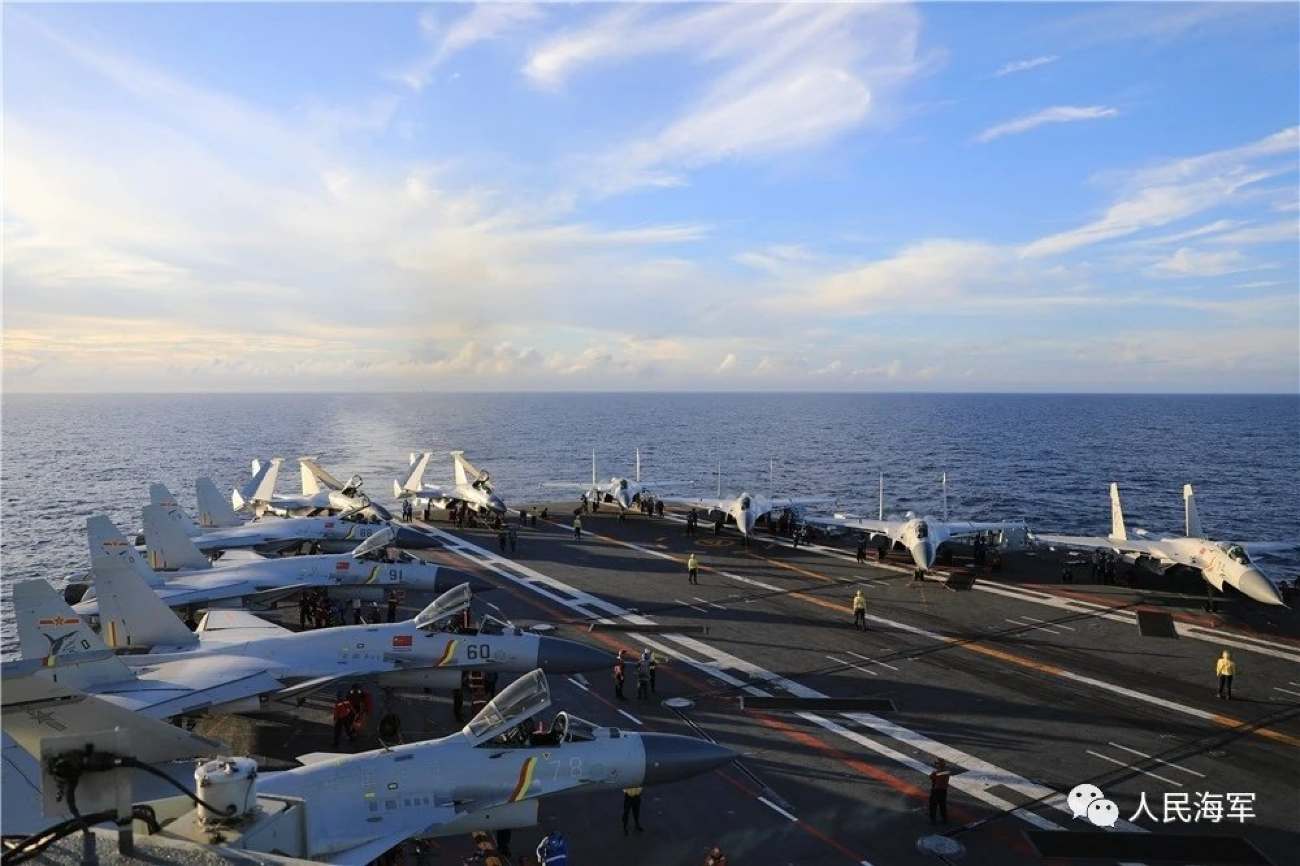Against the backdrop of heightened military activities in the Indo-Pacific region, the Chinese People’s Liberation Army – Navy’s (PLAN’s) J-15 carrier-based fighter jets undertook intensive training exercises focused on Intelligence, Surveillance, and Reconnaissance in conjunction with an early warning aircraft.
The development emerged a mere day after the revelation that Japan and the United States are engaged in joint military maneuvers, marking the first instance where China is portrayed as a simulated adversary.
The Global Times report, citing an announcement from PLA Southern Theater Command, stated that the PLAN’s aviation force recently coordinated an exercise involving its early warning aircraft and fighter jet unit.
This exercise, conducted at high intensity, showcased the PLA Navy’s efforts to operational readiness and effectiveness in complex maritime environments.
During the exercise, early warning aircraft played a pivotal role in forming a communication network and establishing an efficient information chain. These aircraft successfully detected and located target radiation sources, enabling them to guide and direct fighter jets in executing precise attacks against sea-based targets.
The report said the training regimen emphasized various challenging courses, including aerial reconnaissance, early warning, surveillance, and command and control.
The exercise aimed to refine training methods and tactics by subjecting participants to complex scenarios while optimizing operational efficiency.
Moreover, the PLA Southern Theater Command said the exercise also focused on honing joint detection and precision strike capabilities under complex electromagnetic environments.
Although the Chinese military refrained from specifying the exact type of early warning aircraft utilized in the recent military exercises, Chinese observers have pointed to the likely ones being KJ-200 and KJ-500.
These airborne early warning and control aircraft, equipped with turboprop engines, are primarily designed for operation from airfields rather than aircraft carriers.
However, consistent reports indicate that China is developing a carrier-based early warning aircraft, the KJ-600, which is anticipated to be deployed on China’s third aircraft carrier, the electromagnetically catapult-equipped Fujian.

China, US Prepare For Confrontation Over Taiwan?
The recent military maneuvers conducted by the Chinese Navy have underscored the strategic importance of early warning aircraft within the People’s Liberation Army (PLA) Navy’s operational framework.
This strategic arrangement also highlights Beijing’s concerted efforts to enhance its military capabilities, particularly in the context of a potential invasion of Taiwan.
Notably, early warning aircraft featured prominently in the drills, serving as crucial force multipliers capable of detecting, tracking, and guiding attacks against targets.
Additionally, these aircraft can collect extensive intelligence, conduct a thorough analysis, and coordinate mission assignments for other combat units.
According to a Chinese expert cited by the Global Times, the PLA has developed an integrated combat system wherein early warning aircraft assume a critical role.
This system enables fighter jets and other components of the military apparatus to optimize their effectiveness.
:quality(70)/cloudfront-us-east-1.images.arcpublishing.com/archetype/IERO45TOKZCMDB4OUN3J5MTCBE.jpg)
The coordinated efforts between fighter jets and AWACS (Airborne Warning and Control System) aircraft will undoubtedly serve as a deterrent against potential intervention by the United States and its allied forces aimed at thwarting Beijing’s hypothetical attack on Taiwan.
On the other hand, the United States and Japanese forces have intensified their focus on countering the influence of the Chinese military in the region.
In a recent development, the Japanese Self-Defense Forces and the US military have, for the first time, designated China as a hypothetical enemy in their joint command post exercise.
Commencing on February 1 and scheduled to continue through February 8, the computer simulation exercise revolves around a scenario envisioning an emergency in Taiwan.
Notably, previous iterations of such exercises had utilized provisional names when referring to potential adversaries.
Japan’s Defense Ministry has reportedly classified the scenario as a specially designated secret under the country’s secrecy law.
This development aligns with previous statements by US Central Intelligence Agency Director William Burns, who indicated in February 2023 that Chinese President Xi Jinping had instructed the country’s military to prepare for a potential invasion of Taiwan by 2027.
Furthermore, the United States and Japan have developed multiple joint operation plans for various emergency scenarios, with a draft plan specifically addressing contingencies related to Taiwan completed at the end of last year.
- Contact the author at ashishmichel(at)gmail.com
- Follow EurAsian Times on Google News




